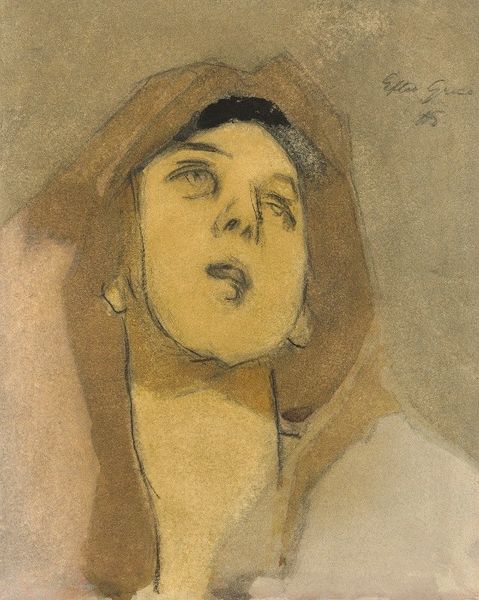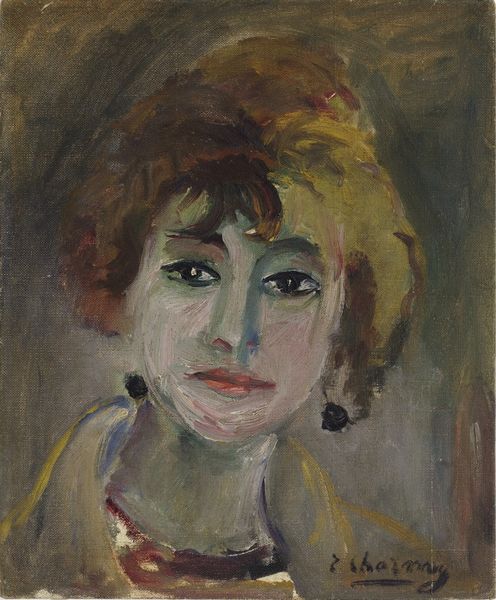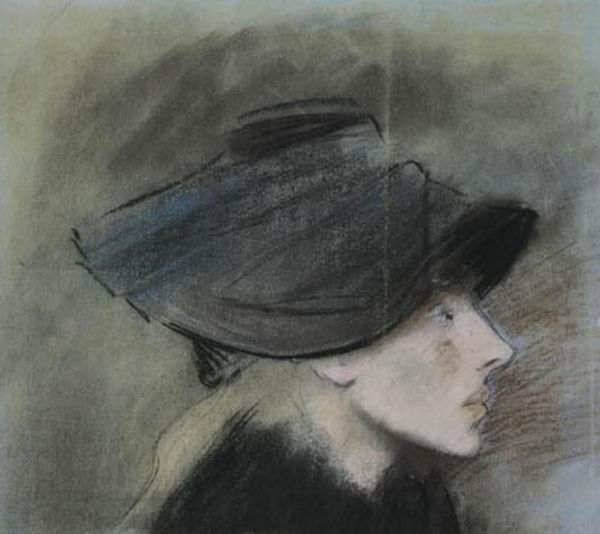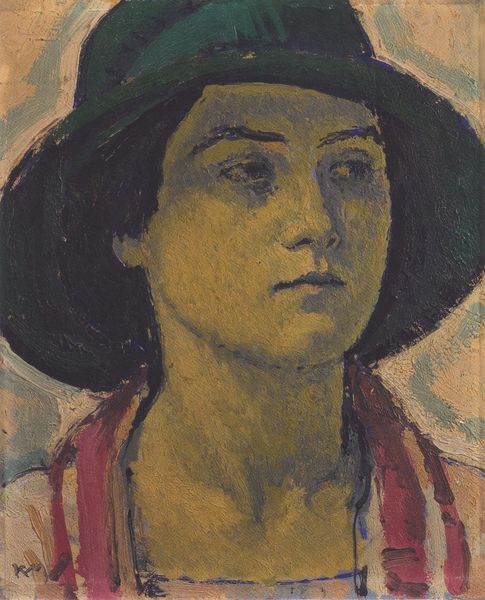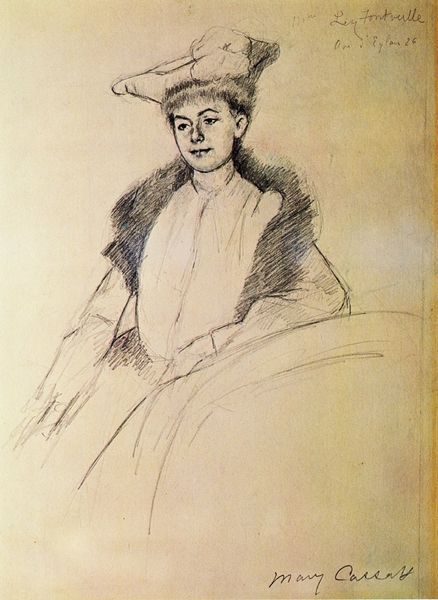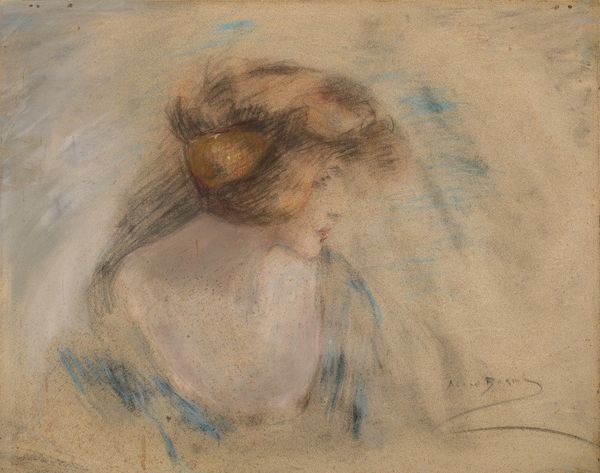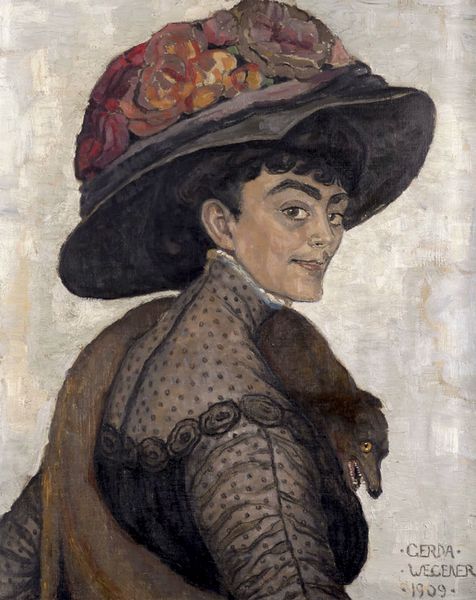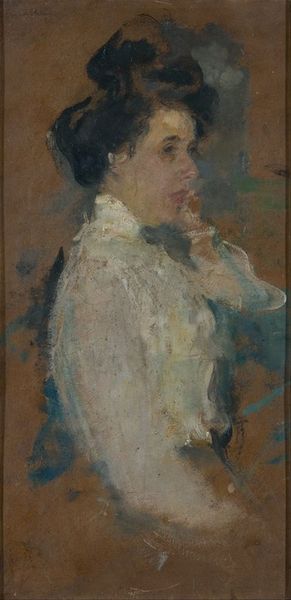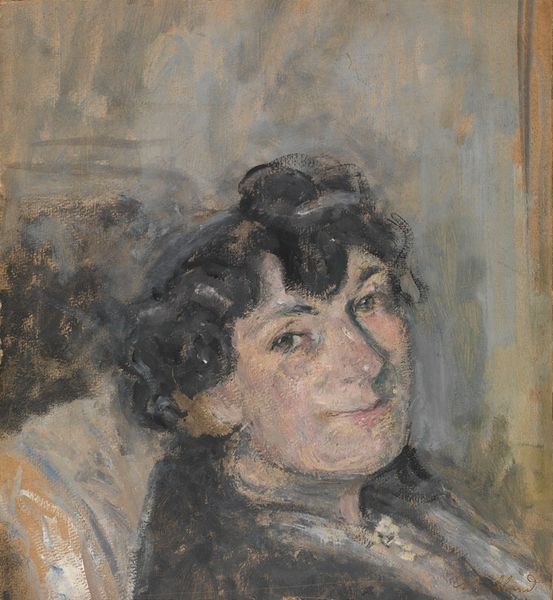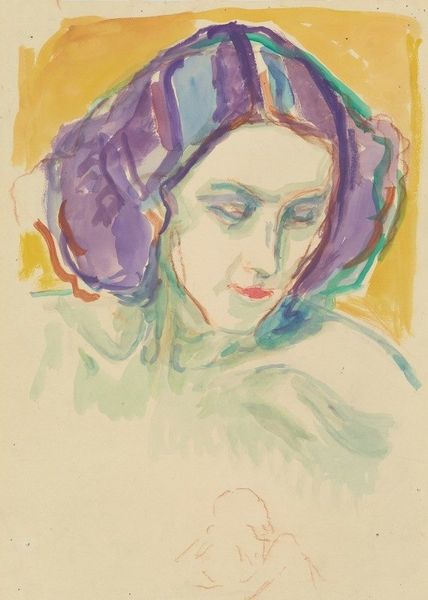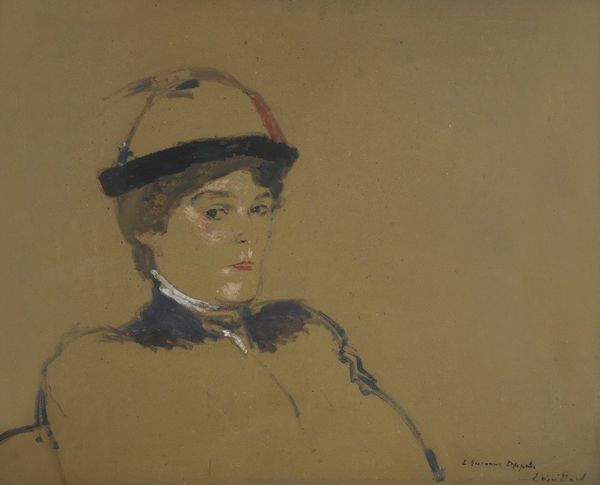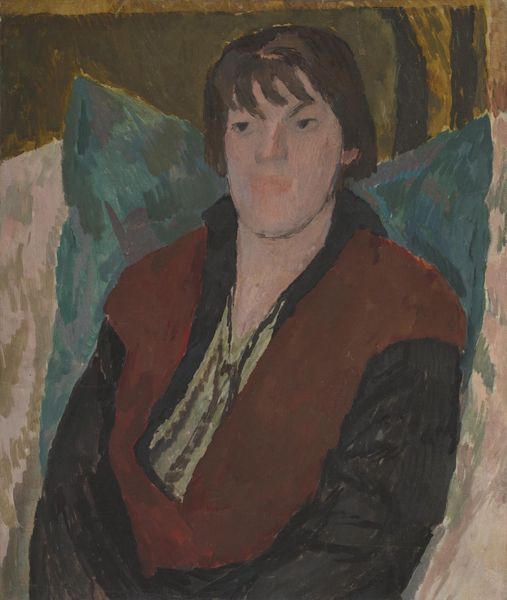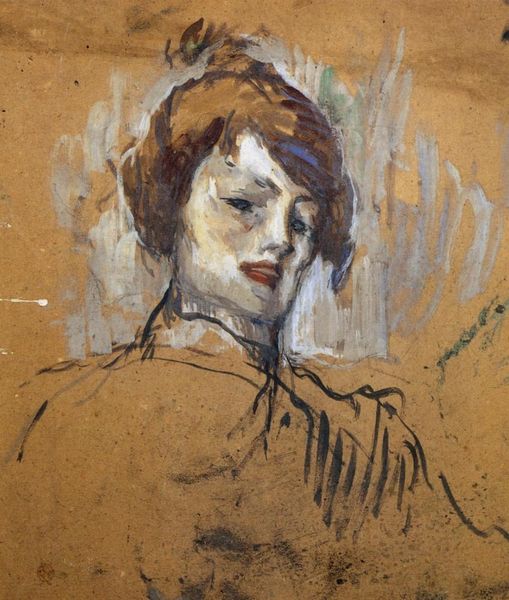
drawing, pastel
#
portrait
#
drawing
#
impressionism
#
oil painting
#
pastel
Copyright: Public Domain: Artvee
Editor: Here we have Edgar Degas' "Madame Dietz-Monnin," created around 1879, a pastel drawing. I’m immediately struck by the way her gaze is directed slightly off frame – she feels present, but also detached from us. What do you see in this portrait? Curator: I see Degas using pastel to capture not just the likeness, but also the societal role of Madame Dietz-Monnin. The late 19th century witnessed the rise of the bourgeoisie, and portraiture served as a visual marker of status. Her fur coat and hat signal her affluence, conforming to how elite women visually presented themselves to the world. But consider, too, Degas’s own position within that society. Editor: How so? Curator: Degas came from a wealthy banking family himself, so he was deeply enmeshed with that class. Yet he often depicted the Parisian elite with a certain detached irony. Do you notice anything about her posture? Editor: She seems quite formal. Almost stiff, perhaps? Curator: Exactly. Is she comfortable or constrained? And how much did this presentation rely on Degas himself as an author, crafting her image for an audience? The gaze, the accessories, are those completely natural? Editor: So, you’re suggesting Degas might be subtly commenting on the performative aspects of upper-class life. It is interesting how a simple drawing can reveal layers of social performance, captured and framed by both the subject and artist. Curator: Precisely. This pastel embodies an era, encapsulating class consciousness, self-fashioning, and the societal pressures faced by women during this time. Editor: I hadn’t considered how much social information could be embedded in a portrait. That provides new context for appreciating it!
Comments
No comments
Be the first to comment and join the conversation on the ultimate creative platform.
